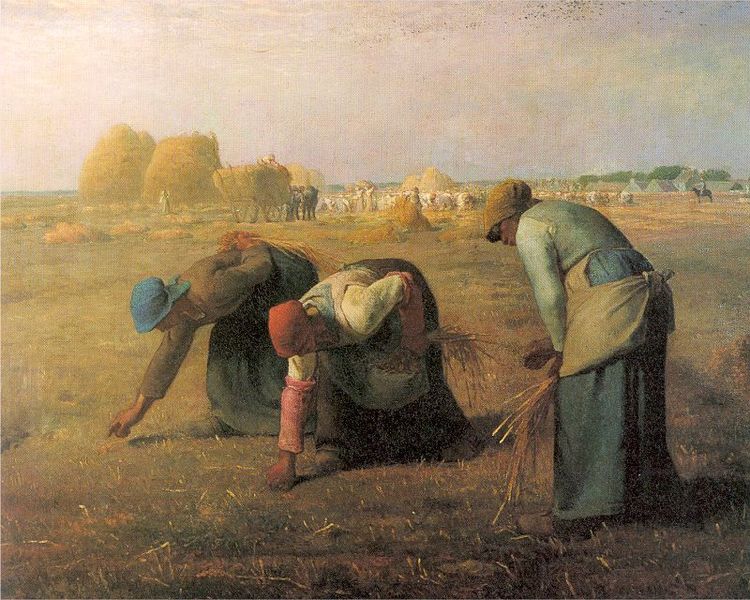Agriculture in Art
Jean Francois Millet
 The Gleaners, 1857
The Gleaners, 1857
Jean-François Millet was a French painter noted for his scenes of peasant farmers. He can be categorized as part of the movements of Realism and Naturalism.
The Gleaners is one of Millet's best-known paintings. It is famous for featuring in a sympathetic way what were then the lowest ranks of rural society; this was received poorly by the French upper classes.Gleaning was the centuries-old right of poor women and children to remove the bits of grain left in the fields following the harvest. Millet found the theme an eternal one, linked to stories from the Old Testament.
A warm golden light suggests something sacred and eternal in this daily scene where the struggle to survive takes place. During his years of preparatory studies, Millet contemplated how best to convey the sense of repetition and fatigue in the peasants' daily lives. Lines traced over each woman's back lead to the ground and then back up in a repetitive motion identical to their unending, backbreaking labor. Along the horizon, the setting sun silhouettes the farm with its abundant stacks of grain, in contrast to the large shadowy figures in the foreground. The dark homespun dresses of the gleaners cut robust forms against the golden field, giving each woman a noble, monumental strength.
Millet first unveiled The Gleaners in 1857. It immediately drew negative criticism from the middle and upper classes, who viewed the topic with suspicion. Having recently come out of the French Revolution of 1848, these prosperous classes saw the painting as glorifying the lower-class worker. To them, it was a reminder that French society was built upon the labor of the working masses, and landowners linked this working class with the growing movement of Socialism.
Discussion Questions
- List all the colors you see in the painting. Where are the lights and shadows? Where is the light coming from?
- List all the objects in the painting.
- What is going on in the painting? Pay attention to all the activity, no matter how small.
- Does anything in the painting remind you of something in your own life?
- Is the painting true-to-life? How real does it look?
- What ideas and emotions does the painting express? How does it make you feel?
- What are some questions the painting bring to mind?
